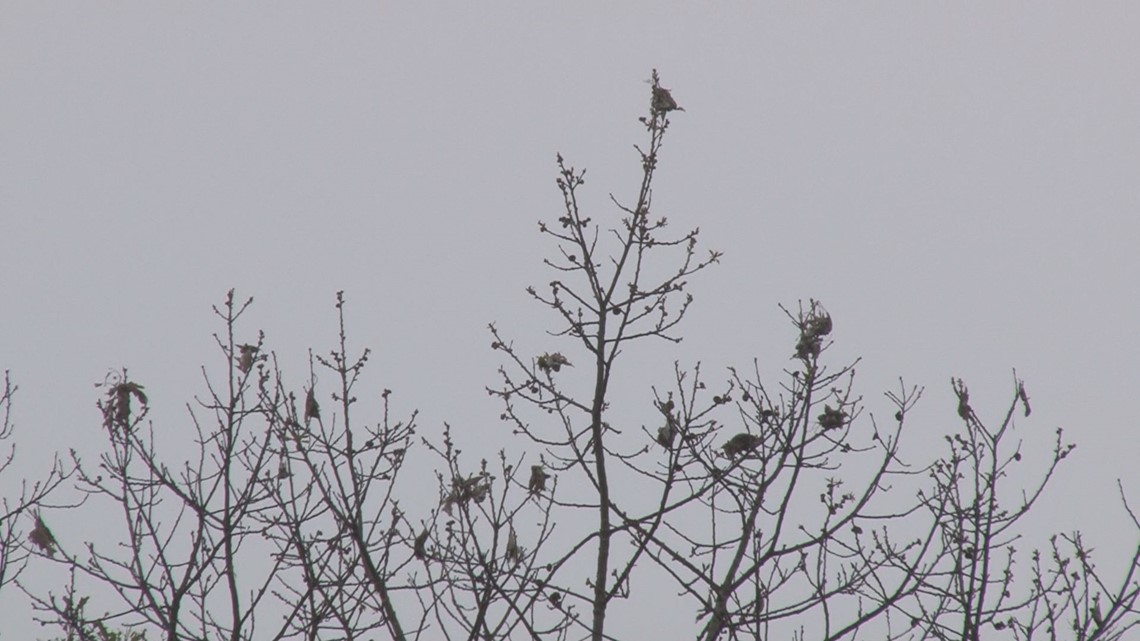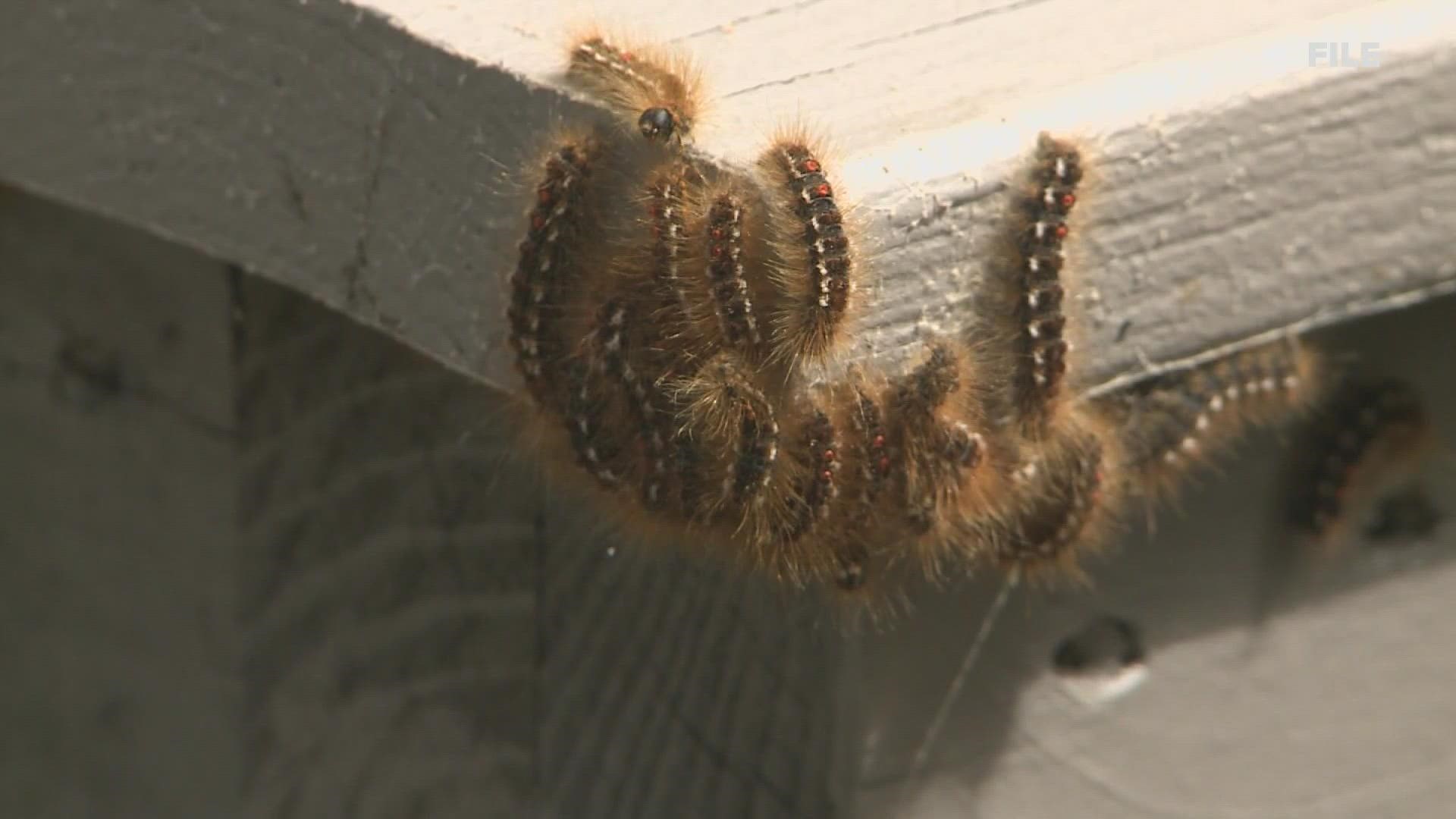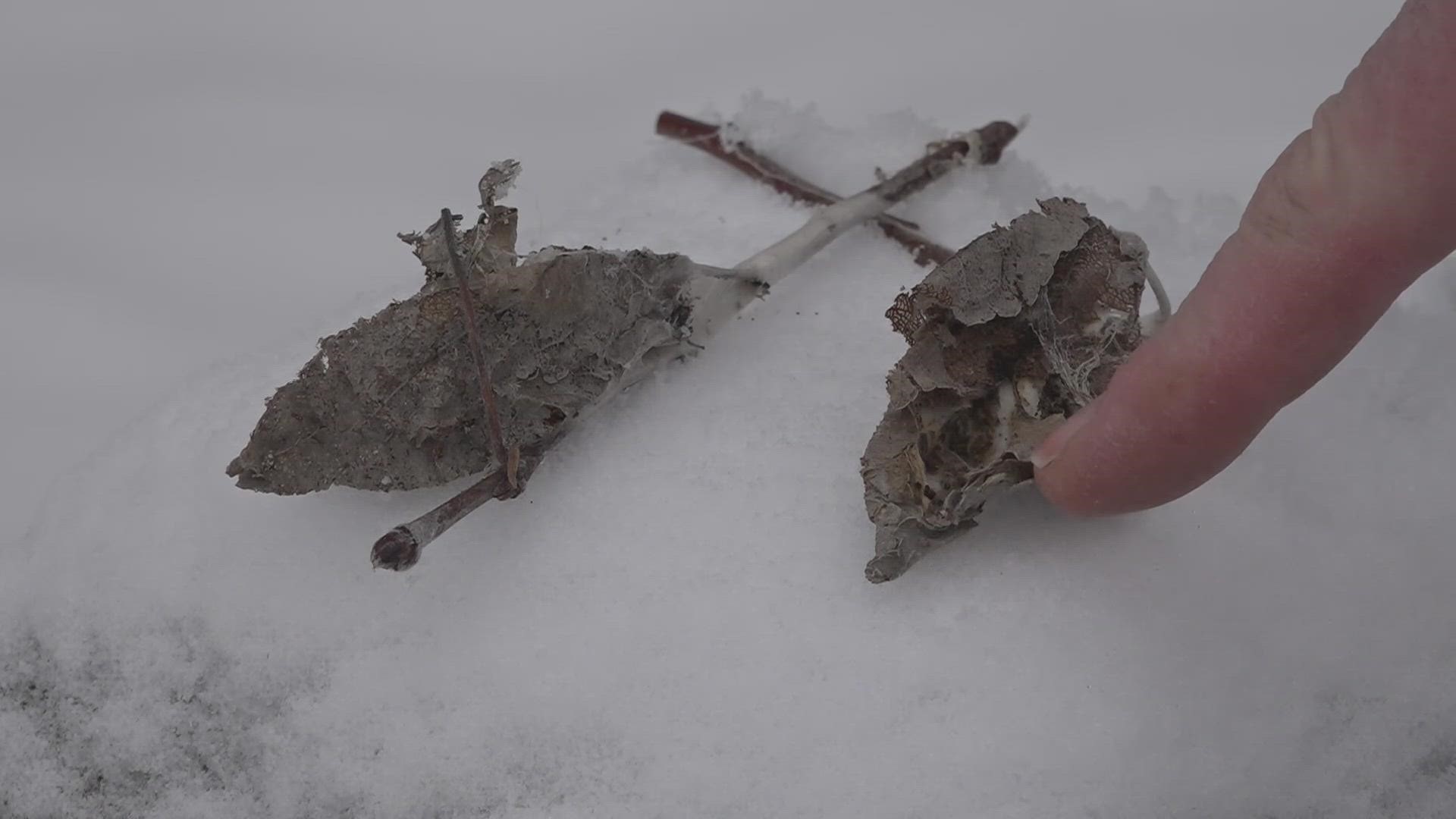PORTLAND, Maine — Editor's note: The video attached was originally published Feb. 11, 2023.
February is Browntail Moth Awareness Month in Maine, and it's important to know how you can protect yourself from these pesky critters ahead of time in the winter months.
From causing itchy rashes to tree defoliation, experts are offering tips and tricks Mainers can use now to reduce their chances of encountering the invasive caterpillars.
According to the Maine Forest Service (MFS) website, recognizing and removing their winter webs from trees this month will help further reduce the damage these pests cause throughout the year as they are active between April and late June.
Here's how you can reduce your risk of exposure by following these four R's provided by MFS:
Recognize
Learn how to recognize browntail moth winter webs. You can check the tips of tree branches for palm-sized webs that are tied to the leaf stem with white silk. The webs are about two to five inches long and are commonly found in oak, apple, crabapple, cherry, birch, poplar, shadbush, and rose bushes.
Remove
When you discover the webs, remove them. You can do so by using hand snips and an extendable pruner in areas that are within reach of the ground. Be sure to stay away from areas near hazards, like powerlines. Always protect your eyes and skin when removing the webs, as the toxic caterpillars may still be present. Once removed, you can obtain a burn permit and burn them in a contained fire or you can soak them in a bucket with soapy water for a few days and then dispose. You can obtain a burn permit here.
Recruit
If you can't remove a web because it's out of reach, you can contact licensed arborists or FAA-certified drone operators to help. Additionally, licensed pesticide applicators may be able to use pesticides on the trees with browntail moth caterpillars in early spring to reduce the population.
Reach out
Let your neighborhood know you found browntail moths so that everyone can work together to respond to the pests and achieve better results in reducing them.


Angela Mech, assistant professor of forest entomology at the University of Maine, reiterated the importance of removing the webs before springtime.
"On sunny days, [the webs] are easy to spot as the white silk the caterpillars use to make the nest is quite reflective," Mech explained. "Each nest can have hundreds of caterpillars, so removing them now will reduce the risk of itching come springtime."
Mech added that in addition to contacting outside help to remove the webs, many local libraries, like the Old Town Library, have pole pruners that you can sign out for use.
Reducing your risk of exposure to browntail moth caterpillars is important in protecting your health. According to the Maine Center for Disease Control and Prevention website, these critters have tiny poisonous hairs that can cause dermatitis similar to poison ivy. The MFS said the rashes can appear red, bumpy, and itchy.
"People may develop dermatitis from direct contact with the caterpillar or indirectly from contact with airborne hairs," the Maine CDC website stated. "The hairs become airborne from either being dislodged from the living or dead caterpillar or they come from cast skins with the caterpillar molts."
The Maine CDC website added that most affected by the poisonous hairs develop a localized rash that can last for a few hours to several days. Sensitive individuals may experience a more severe rash that can last for several weeks.
"The rash results from both a chemical reaction to a toxin in the hairs and a physical irritation as the barbed hairs become embedded in the skin. Respiratory distress from inhaling the hairs can be serious," the Maine CDC website said.
According to the Maine Forest Service, mild rashes can be treated at home by taking a cool bath with baking soda or Aveeno Oatmeal Bath Treatment, using hydrocortisone cream, such as Cortaid, sparingly, and calamine or Caladryl lotion.
Always be sure to reach out to your primary care provider for any questions or concerns about browntail moth rashes or if home remedies are not providing relief.
And while you may think you're out of the woods by the end of June, the negative impacts of these pests can linger even longer.
The Maine CDC website explained that browntail moth hairs can remain toxic throughout the summertime. However, they do get washed into the soil and become less of a problem as time goes on.
By practicing the "four R's" and always remaining cautious of browntail moth caterpillars, you can reduce your risk of exposure and get outside to enjoy the warm days to come.


